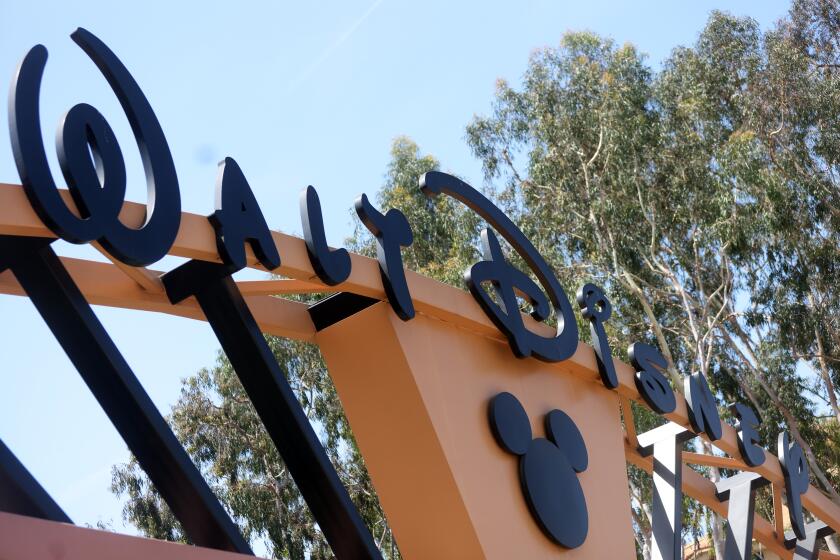USING A GIANT POLAROID
- Share via
CARMEL — Photographers are famous for going to great lengths to produce a picture, but this is ridiculous: a four-foot-long, six-foot-high, 200-pound Polaroid camera? A lumbering machine that suffers from light leaks and has to be wheeled around or laboriously trucked to locations? A recalcitrant contraption that’s extremely hard to tilt and thus requires its subjects to be upright? Who needs it?
Probably no one, but increasing numbers of artists are having great fun learning to work with the massive camera’s limitations and, yes, advantages. Operating on the same principle as Polaroid’s familiar small models, the oversize camera produces unsalvageable 20x24-inch negatives that yield a single contact print of the same dimensions. Artists prize the high resolution of the images (there’s none of the graininess typical of enlargements), the extraordinary detail, the scale and verisimilitude of imagery and, above all, the instant results of the process. Though photographers may labor tediously to set up a situation to be photographed, they can judge the success or failure of the result immediately and make changes accordingly.
Five such Polaroid monsters exist. One belongs to Polaroid inventor Edwin Land, three are permanently stationed in Boston, Japan and Germany, and the fifth goes on the road for specially organized projects. Results of the latest traveling Polaroid venture are displayed in “The Carmel Project,” an exhibition (through Sept. 1) at the Friends of Photography gallery in Carmel’s Sunset Cultural Center.
The show features five to seven prints each by Northern California artists Lawrie Brown, Joel Leivick, Catherine Wagner, Melanie Walker and Don Worth. According to exhibition curator Julia Nelson Gal, one of four Friends executives who selected the artists, the idea was to achieve “a good balance between artists who work indoors and outdoors, those who shoot in their studios and on location, and between black-and-white and color.”
“We wanted artists who hadn’t worked with this camera before,” she continued, “but mainly we looked at the kind of work they do so that we would have a diversity.” Asked if certain approaches had to be excluded because of the cumbersome camera’s limitations, she said, “We tried not to rule out anything, but it became too difficult to include a street photographer. The closest to it is Joel Leivick’s casual portraiture of Monterey Bay Area residents.”
Photography in “The Carmel Project” was done during a two-week period when each participant had two days to use the camera. John Reuter, a Boston-based photography consultant for Polaroid, served as technician for the project, smoothing out all problems. According to Gal, he made “a very difficult two weeks seem easy.” Among countless other services, he rigged up devices to prevent the dreaded light leaks and glare when the camera was used outside.
“The photographers had to struggle with the camera’s limited mobility, the short depth of field, the long or multiple exposures often necessary and the unchangeable vertical format,” Gal said, but they didn’t compromise their aesthetics. Brown, who chairs the photography division at Cabrillo College, made cropped images of painted plants, thus confusing viewers between nature and artifice. She pictured a “Red-Spotted Ficus,” a “Pink-Dotted Dracula” and a “Yellow and Blue White Sail Plant.” In the exhibition, the sponge-painted plant reproduced in her “Multi-Colored False Arelia” sits on a stand near the photograph of it.
Brown’s loose abstractions contrast dramatically with Don Worth’s profusely patterned and precisely focused still lifes of flowers, wall paper and china. Worth, a former assistant to Ansel Adams, is a professor of art at San Francisco State University. Walker, a photography instructor at the same school, also works in color and in a studio. For the project she produced muted abstractions of broken dishes and intriguing conceptual tableaux integrating words and objects.
Leivick and Wagner, who teach at Stanford University and Mills College, respectively, both photograph in black-and-white. Leivick’s prints include affectionate portraits of a cactus farmer and wonderfully textured shots of tools in a sandblasting workshop that recall trompe l’oeil paintings. Wagner continued her series, “The American Classroom,” with casual-looking pictures of the austere surroundings and instructional tools for teaching music, science and manufacturing technology at Monterey Peninsula College.
The project met enthusiastic response from the participants, said Gal, remembering how Don Worth “really got ornate” and “thrived on the detail” of his pictures. And one artist, Melanie Walker, is already at it again. “She got so excited, we had to slow her down. Now she has gone to Boston to use the camera there.”
More to Read
The biggest entertainment stories
Get our big stories about Hollywood, film, television, music, arts, culture and more right in your inbox as soon as they publish.
You may occasionally receive promotional content from the Los Angeles Times.










